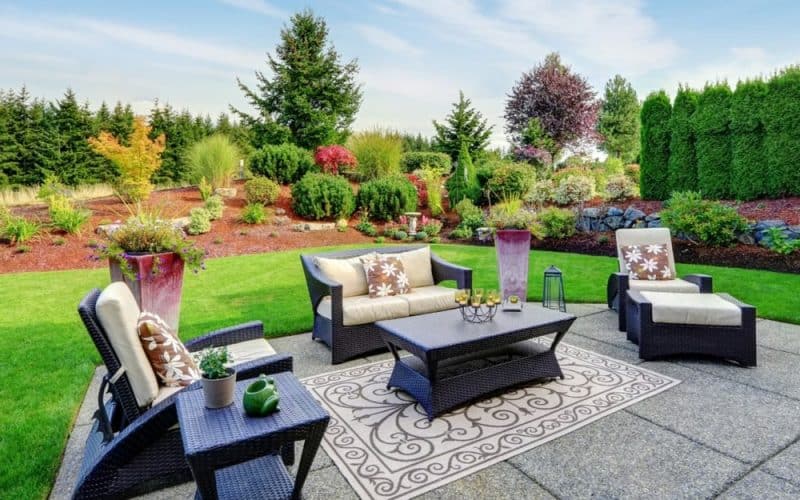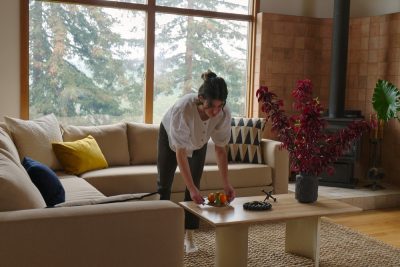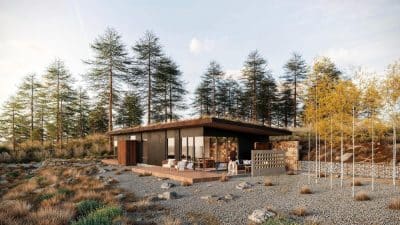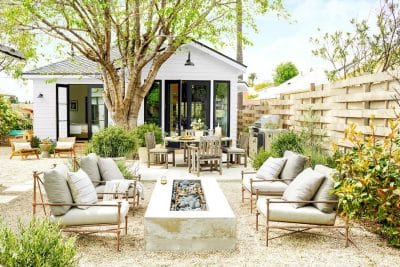
In Maine’s picturesque landscape, having a serene and inviting outdoor space has become an increasingly coveted luxury. An expertly designed outdoor retreat can serve as a personal sanctuary, a place to unwind and escape the stresses of daily life while enjoying the state’s natural beauty. Moreover, it extends the living area beyond four walls, seamlessly blending indoor and outdoor living to make the most of Maine’s stunning seasons.
The importance of an alluring outdoor space lies in its ability to enhance one’s quality of life in the Pine Tree State. It provides a soothing environment to relax, entertain guests, and connect with Maine’s diverse flora and fauna. With careful planning and design, Maine homeowners can create an outdoor oasis tailored to their unique needs and preferences, transforming their backyard into a valid extension of their home that celebrates the state’s natural charm.
Planning Your Outdoor Space
The first step in crafting your dream outdoor space in Maine is meticulous planning. This involves assessing the available area and layout, considering size, shape, and existing features. A thorough evaluation will help you determine the best use of the space and identify potential challenges or opportunities unique to Maine’s terrain. Sun exposure is crucial to consider, as it will influence the placement of various elements and the overall ambiance of the space, especially given Maine’s varying daylight hours throughout the year. Privacy and views are also important factors, particularly if you’re lucky enough to have a property with scenic vistas of Maine’s coastline, forests, or mountains.
Next, determine the primary functionality of your outdoor space. Will it serve as an entertainment hub for hosting lobster bakes and clambakes, a tranquil retreat for relaxation during the fleeting summer months, or a combination of both? Defining the intended use will guide the design process and ensure the space meets your needs while complementing Maine’s lifestyle.
Finally, establish a realistic budget and prioritize the most essential features. Considering Maine’s specific climate and environmental factors, this will help you allocate resources effectively and make informed decisions throughout the design and implementation phases.
The specific climate can also play a role in your planning. Consider factors like long winters and how you might use the space year-round. Contractors in Maine will be familiar with these challenges and can offer solutions tailored to your state’s unique climate. Researching local materials and discussing permitting requirements with experienced professionals will ensure a smooth and successful project.
Design Elements
Once you have a clear vision and plan, it’s time to explore the various design elements that will bring your Maine outdoor space to life. These elements can be categorized into several key areas:
- Hardscaping: In Maine, hardscaping elements such as patios, decks, walkways, and retaining walls form the backbone of your outdoor space. Carefully consider your chosen materials, which will significantly impact the overall aesthetic and functionality. Options include locally sourced granite, fieldstone, or traditional New England brick for a classic look. Consider durable materials like cedar or composite decking for decking that can withstand Maine’s freeze-thaw cycles. When selecting materials, consider their visual appeal, durability, maintenance requirements, and environmental impact. Additionally, explore different patterns and designs to create visual interest and complement the overall style of your space.
- Landscaping: Lush greenery and thoughtful plantings can transform a bare outdoor area into a verdant oasis that celebrates Maine’s native flora. Start by considering low-maintenance options that require minimal upkeep and can thrive in Maine’s climate, such as native plants like black-eyed Susans, coneflowers, and blue flag iris. Incorporate a variety of textures, colors, and heights to create depth and interest throughout Maine’s distinct seasons. Consider adding elements that attract local wildlife, such as bird feeders or native berry-producing shrubs, to create a backyard habitat that connects you with Maine’s natural ecosystem.
- Outdoor Structures: Outdoor structures like pergolas, gazebos, and sheds can serve functional and aesthetic purposes. These elements can provide shade, shelter, and additional living or storage space. When selecting outdoor structures, consider their size, materials, and architectural style to ensure cohesion with the overall design.
- Water Features: The soothing sounds of running water can instantly create a sense of tranquility in your outdoor space. Water features like ponds, fountains, and waterfalls add visual interest and a calming ambiance. Consider the size and placement of these features and the necessary maintenance and upkeep.
- Lighting: Proper lighting is essential for creating an inviting and functional outdoor space. Ambient lighting sets the mood, while accent lighting highlights specific features or architectural elements. Task lighting, conversely, illuminates particular areas for activities like dining or entertaining. Explore various lighting options, such as path lights, string lights, and landscape lighting, to achieve the desired atmosphere.
- Furniture: Comfortable and durable outdoor furniture is crucial in creating a functional and enjoyable outdoor living space. Seating options like sofas, chairs, and loungers encourage relaxation and socialization, while dining sets provide the perfect setting for alfresco meals. When selecting furniture, prioritize weather resistance and style to ensure longevity and aesthetic appeal.
Creating Zones and Flows
To create a cohesive and functional outdoor space, it’s essential to define distinct zones for specific activities and establish a seamless flow between them. This will ensure that each area serves its intended purpose while contributing to the overall harmony of the design.
Begin by identifying the primary activities you want to accommodate, such as dining, lounging, entertaining, or gardening. Dedicate specific areas for each activity, considering factors like sun exposure, privacy, and proximity to the house.
Once you’ve defined the zones, consider how they will transition into one another. Incorporate pathways or stepping stones to guide the movement between areas, and use focal points like water features, sculptures, or statement plantings to draw the eye and create a sense of cohesion.
Adding Personal Touches
While adhering to design principles and considering functionality is crucial, remember to infuse your outdoor space with personal touches that reflect your unique style and interests. This is where you can make the space your own and create a sense of belonging.
Start by incorporating decor elements that showcase your personality and aesthetic preferences. This could include artwork, planters, or decorative accessories that complement the overall design. Consider incorporating elements that reflect your hobbies or cultural heritage, creating a space that genuinely resonates with you.
Additionally, consider incorporating functional elements catering to your interests or needs. For example, if you enjoy outdoor cooking, include a built-in grill or kitchen area. You could create a dedicated gardening or potting area if you have a green thumb.
Maintenance and Upkeep
While designing and creating your dream outdoor space is an exciting endeavor, it’s essential to consider the ongoing maintenance and upkeep required to keep it looking its best. Proper care and attention will ensure that your investment remains a source of pride and enjoyment for years.
Regular lawn and garden care, including mowing, weeding, and pruning, is essential for maintaining a lush and well-manicured appearance. Additionally, protecting outdoor furniture and structures from the elements by using covers or storing them during harsh weather conditions will extend their lifespan.
It’s also crucial to consider seasonal considerations, such as winterizing water features or preparing gardens for dormancy. By incorporating low-maintenance design elements and establishing a consistent routine, you can minimize the time and effort required to keep your outdoor space looking its best.
Conclusion
Designing your dream outdoor space in Maine is a rewarding journey that balances functionality with aesthetic appeal, while celebrating the state’s unique character. From cozy fall foliage nooks to summer lobster bake decks and winter-ready fire pit patios, each element should harmonize with Maine’s climate and scenery. Incorporate local materials like granite and pine, showcase native plants, and create spaces for beloved Maine activities. By thoughtfully planning for year-round enjoyment and infusing personal touches that reflect both your style and the state’s natural beauty, you’ll craft an outdoor sanctuary that not only enhances your home but also embraces the essence of Maine living. This carefully designed space will provide a restorative retreat for relaxation, entertainment, and connection with nature, embodying the rugged charm and innovative spirit that makes the Pine Tree State special.









